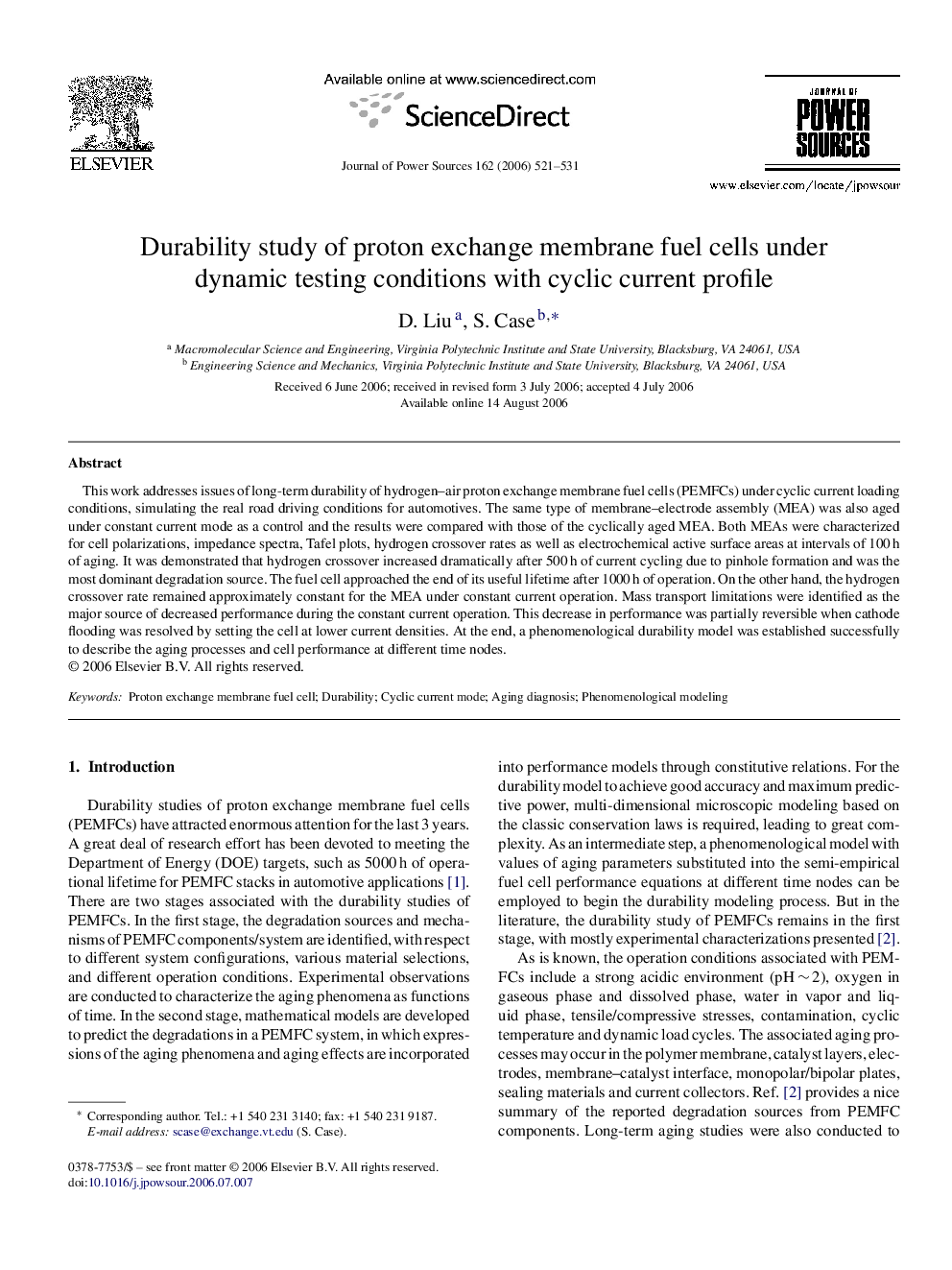| Article ID | Journal | Published Year | Pages | File Type |
|---|---|---|---|---|
| 1291875 | Journal of Power Sources | 2006 | 11 Pages |
This work addresses issues of long-term durability of hydrogen–air proton exchange membrane fuel cells (PEMFCs) under cyclic current loading conditions, simulating the real road driving conditions for automotives. The same type of membrane–electrode assembly (MEA) was also aged under constant current mode as a control and the results were compared with those of the cyclically aged MEA. Both MEAs were characterized for cell polarizations, impedance spectra, Tafel plots, hydrogen crossover rates as well as electrochemical active surface areas at intervals of 100 h of aging. It was demonstrated that hydrogen crossover increased dramatically after 500 h of current cycling due to pinhole formation and was the most dominant degradation source. The fuel cell approached the end of its useful lifetime after 1000 h of operation. On the other hand, the hydrogen crossover rate remained approximately constant for the MEA under constant current operation. Mass transport limitations were identified as the major source of decreased performance during the constant current operation. This decrease in performance was partially reversible when cathode flooding was resolved by setting the cell at lower current densities. At the end, a phenomenological durability model was established successfully to describe the aging processes and cell performance at different time nodes.
